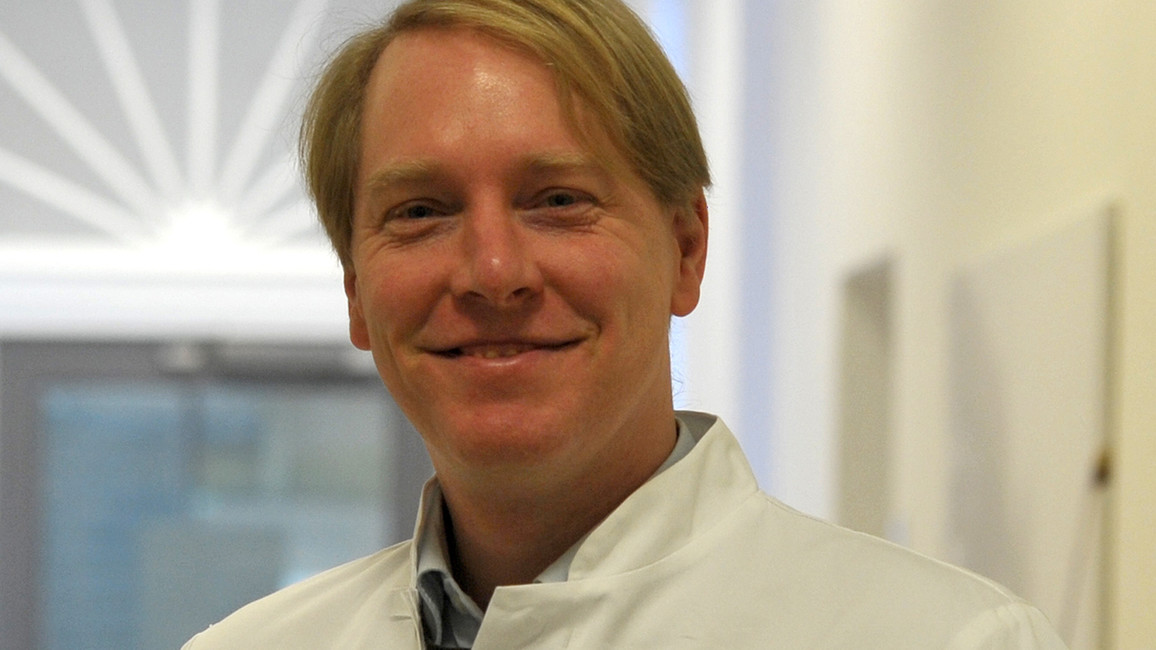01.03.2018 RESEARCH
“The heart pants can save lives”
Scientist Philipp Hillmeister on a pair of pants that contract rhythmically in time with the heart, accelerating blood flow – and thus preventing amputations, heart attacks and strokes. An interview with bmbf.de.
Bmbf.de: Mr. Hillmeister, you are researching and developing cardiac pants in the “AngioAccel” project – what exactly is that?
Philipp Hillmeister: A unique medical device for the treatment of severe circulatory disorders in the legs – so-called peripheral arterial occlusive disease, or pAVK for short. Sufferers very often have to have their legs amputated. In addition, the risk of a heart attack or stroke is increased. Cardiac pants can reduce the risk: they can save lives.

Dr. Philipp Hillmeister leads the AngioAccel project. ©JACQUELINE STEINER
How can a pair of pants do that?
The cause of pAVD in over 90% of cases is atherosclerosis: this is a disease in which blood vessels calcify, disrupting blood flow. Sufferers suffer from severe leg pain, they withdraw and move less and less – this only aggravates the disease. Cardiac pants help because they increase blood flow and simulate movement.
Can you explain that in more detail?
We wrap cuffs around the patient’s hips and thighs. These contract rhythmically in time with the heart. This accelerates the flow of blood through the leg arteries – and they “think” that the patient is exercising, even though it is during therapy.
Doesn’t this encourage patients to move even less?
On the contrary! Sufferers move too little because of the severe pain. The therapy activates the regenerative power of the arteries and strengthens the cardiovascular system. As a result, pain is reduced and patients can once again exercise independently and live more active lives.
The Federal Ministry of Education and Research supports you in taking your idea from research to application: When is the time?
We are currently testing the cardiac pants in a clinical trial to optimize them for use. The project will run until December 2019. If it is shown that patients’ health improves, we plan to offer the therapy at selected treatment centers nationwide. It would also be conceivable to develop a system for home use. But we are now waiting for the results of the study.
AngioAccel. The Federal Ministry of Education and Research is funding the AngioAccel project of the Brandenburg Medical School with the measure “Validation of the technological and societal innovation potential of scientific research – VIP+”.
Source: www.bmbf.de
